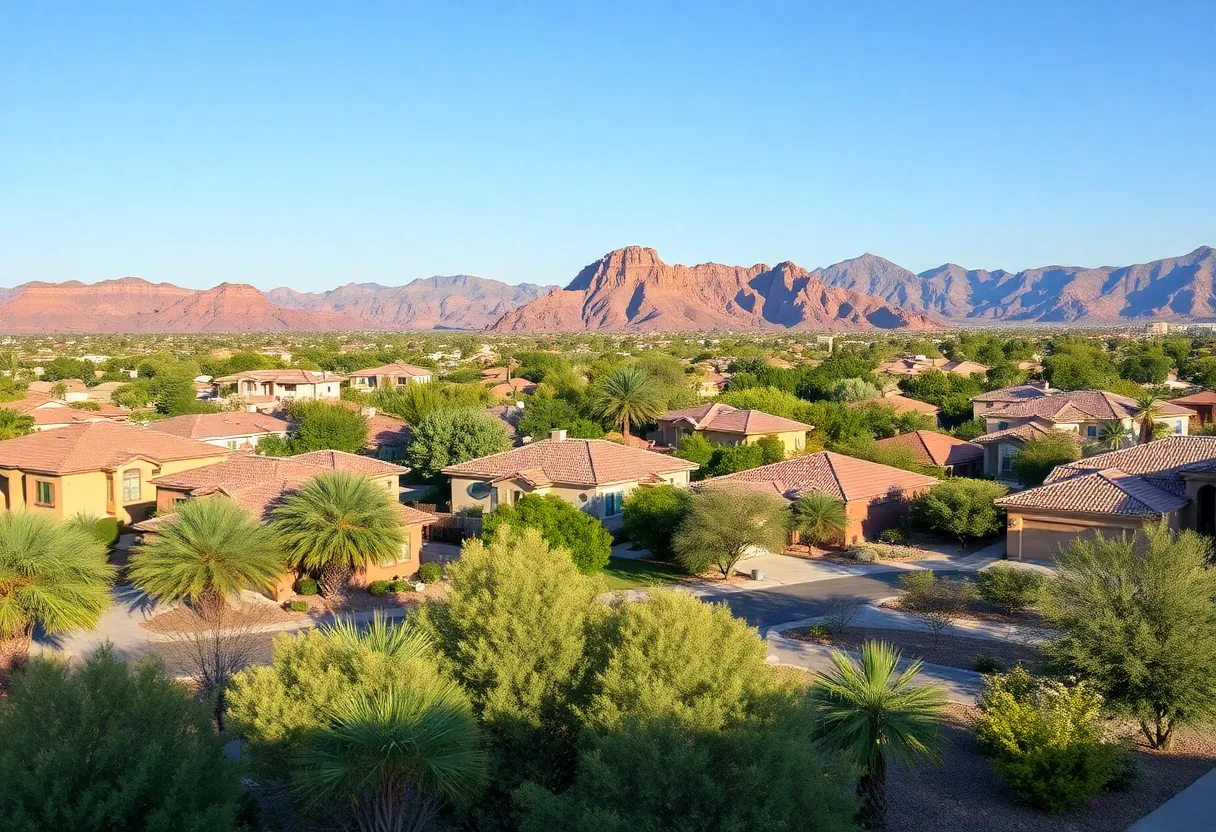10 Must-Know Tips for Understanding Neighborhood Amenities Before Buying Your First Home
Introduction
Purchasing your first home is a landmark event that involves many layers of decision-making. While the physical features of the property often dominate initial considerations, understanding the neighborhood’s amenities is equally vital. These amenities directly influence daily convenience, lifestyle quality, safety, and long-term property value. Approaching this evaluation systematically enables buyers to make informed choices aligned with their needs and investment goals. This comprehensive guide delineates ten essential tips for assessing neighborhood amenities effectively before committing to a purchase.
1. Assess Proximity to Essential Services
Proximity to essential services is a foundational aspect. These include supermarkets, pharmacies, healthcare facilities, and educational institutions. Their locations impact daily routines—such as grocery shopping, medical visits, and school commutes. Homes situated within close reach of these services typically offer greater convenience, reduce travel time, and foster a sense of security.
When evaluating, consider both the distance and ease of access. For instance, walking distance or short driving commutes often enhance convenience, especially for seniors or individuals with mobility challenges. A neighborhood with well-distributed essential services also tends to have higher resilience during emergencies or service disruptions.
2. Evaluate Public Transportation Options
Public transportation availability is crucial, particularly in urban or suburban environments. Efficient transit options include buses, trains, subways, or light rail systems. The density and reliability of these options influence daily commutes, access to employment centers, and overall mobility.
Proximity to transit hubs or stops often correlates with increased home values. Properties within walking distance to transit points typically attract more buyers, especially those seeking cost-effective, eco-friendly, and flexible mobility alternatives.
Assess schedules, frequency, and safety features of nearby transit services. Consider the neighborhood’s connectivity, which directly impacts commuting time and lifestyle flexibility.
3. Investigate Safety and Crime Rates
Safety concerns are paramount for peace of mind and property protection. An analysis of local crime statistics provides insight into prevalent issues such as theft, assault, or vandalism. Reliable sources typically include local law enforcement reports or neighborhood crime maps.
Additionally, assess the presence of community policing initiatives or neighborhood watch programs. Community engagement in safety practices often correlates with reduced crime rates. A safe neighborhood contributes positively to quality of life and can significantly influence resale value.
Prioritize areas with transparent crime data and an active community that promotes safety awareness.
4. Examine Educational Institutions
Quality of nearby schools impacts not only families with children but also property values. Reputable schools often attract long-term residents and increase demand, leading to higher resale prices.
Research school ratings, extracurricular activities, and community involvement. Proximity to excellent educational institutions can also enhance daily routines by reducing commute times for students.
Even for non-parents, homes within well-rated school districts tend to appreciate more steadily, as they are desirable investments for future buyers.
5. Explore Recreational Facilities and Green Spaces
Neighborhoods with accessible recreational facilities—such as parks, sports complexes, trails, or community centers—offer tangible lifestyle benefits. These spaces promote physical activity, relaxation, and social engagement, contributing to overall well-being.
Green spaces also serve as buffers against urban noise and pollution, improving air quality. The presence of such amenities often correlates with higher property appeal and value, especially in areas where outdoor activities form part of the communal lifestyle.
Evaluate the size, accessibility, and maintenance of nearby parks and recreational sites when considering your options.
6. Assess Retail and Dining Options
A vibrant local economy with diverse retail outlets, restaurants, and entertainment venues enhances convenience and quality of life. Having essential stores—such as supermarkets, bakeries, or specialty shops—in easy reach reduces dependence on driving long distances.
Dining options reflect neighborhood vitality and cultural richness. Neighborhoods with a variety of eateries and shops tend to attract a lively community, which can drive demand and boost property values.
Evaluate both the variety and quality of establishments within walking or short driving distance to ensure the neighborhood meets your lifestyle preferences.
7. Consider Healthcare Facilities
Proximity to healthcare facilities such as hospitals, clinics, dental practices, and pharmacies constitutes a critical amenity for all households. Emergency access can be a matter of life and death, but routine medical visits also benefit from nearby providers.
Investigate the distance and accessibility of these facilities. Quick medical access provides peace of mind and is particularly important for families with health concerns or seniors. Neighborhoods with good healthcare access tend to retain their attractiveness and can command higher prices.
8. Investigate Community Engagement and Events
A neighborhood with active community participation fosters a sense of belonging and promotes social cohesion. Active communities often host events such as farmers’ markets, festivals, neighborhood clean-ups, or social gatherings.
Such engagement indicates resident investment in maintaining neighborhood vibrancy and safety. A lively social environment elevates neighborhood desirability, making it an appealing place to live and invest.
Observe local boards, community centers, or social media groups to gauge activity levels.
9. Evaluate Future Development Plans
Understanding future development plans helps anticipate how the neighborhood might evolve. These include zoning changes, new infrastructure, commercial developments, or public facility upgrades.
Research local zoning ordinances and city planning documents to identify upcoming projects. Planned developments—like new parks, transit lines, or commercial hubs—can increase property values and improve lifestyle amenities.
Conversely, overdevelopment or poorly planned projects may lead to congestion, environmental concerns, or decreased quality of life. A balanced view of future growth is essential for making a sound investment.
10. Assess Walkability and Bikeability
Walkability refers to how easily residents can access amenities on foot, while bikeability assesses safe and convenient biking options. Both metrics hinge on sidewalk infrastructure, bike lanes, and pedestrian-friendly streets.
High walkability and bikeability scores often correlate with improved health, lower transportation costs, and higher property desirability. Urban planners increasingly prioritize walkable neighborhoods, which tend to retain or increase their value over time.
Evaluate local street layouts, crosswalks, and cycling infrastructure—these features contribute to an overall livability quotient.
Conclusion
Thoroughly evaluating neighborhood amenities is *crucial* in making an informed home purchase. These factors influence your daily routine, safety, social engagement, and long-term investment potential. By systematically assessing proximity, safety, services, recreational opportunities, and future prospects, you can select a neighborhood that aligns with both your lifestyle and financial goals. A well-chosen environment not only enhances your quality of life but also ensures your property remains a valuable asset.
FAQs
Why is proximity to essential services important when buying a home?
Proximity to essential services like grocery stores, healthcare facilities, and educational institutions reduces commute times and enhances daily convenience, contributing to a higher quality of life.
How does access to public transportation affect property values?
Homes near public transportation options tend to be more valuable due to the convenience they offer residents, leading to increased demand and higher property values.
What role do recreational facilities and green spaces play in a neighborhood’s appeal?
Access to parks, walking trails, and community centers provides venues for exercise, relaxation, and social interaction, enhancing the neighborhood’s appeal and potentially increasing property values.
Why is community engagement important when evaluating a neighborhood?
Active community engagement fosters a sense of belonging and can lead to a more vibrant and cohesive neighborhood, enhancing its overall appeal and desirability.
How do future development plans impact a neighborhood’s desirability?
Understanding future development plans helps anticipate changes in the neighborhood’s dynamics, allowing you to assess potential impacts on property values and the area’s character.
Key Features Chart
| Feature | Importance | Indicators to Evaluate |
|---|---|---|
| Proximity to essential services | High | Distance to supermarkets, healthcare, schools |
| Public transportation | High | Transit stops, schedule reliability, connectivity |
| Safety and crime rates | High | Crime statistics, community safety initiatives |
| Educational quality | Medium-High | School ratings, extracurricular offerings |
| Recreational and green spaces | Medium | Parks, trails, community centers |
| Retail and dining options | Medium | Variety and quality of local shops and restaurants |
| Healthcare facilities | High | Proximity to hospitals, clinics, pharmacies |
| Community engagement | Medium | Neighborhood events, social groups |
| Future development | Variable | Zoning plans, upcoming projects |
| Walkability / Bikeability | High | Pedestrian-friendly infrastructure, safe cycling routes |
Author: STAFF HERE PHOENIX WRITER
The PHOENIX STAFF WRITER represents the experienced team at HEREPhoenix.com, your go-to source for actionable local news and information in Phoenix, Maricopa County, and beyond. Specializing in "news you can use," we cover essential topics like product reviews for personal and business needs, local business directories, politics, real estate trends, neighborhood insights, and state news affecting the area—with deep expertise drawn from years of dedicated reporting and strong community input, including local press releases and business updates. We deliver top reporting on high-value events such as the Waste Management Phoenix Open, Cactus League Spring Training, and Arizona State Fair. Our coverage extends to key organizations like the Greater Phoenix Chamber of Commerce and Visit Phoenix, plus leading businesses in technology and healthcare that power the local economy such as Intel and Banner Health. As part of the broader HERE network, including HERETucson.com, we provide comprehensive, credible insights into Arizona's dynamic landscape.





